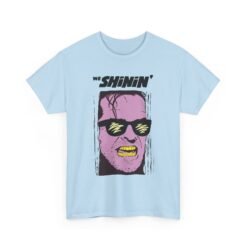Entertainment, Music History, Television & Media
The Day MTV Launched: A Look Back at August 1, 1981
The Birth of MTV
MTV, or Music Television, emerged as a groundbreaking concept in the media landscape on August 1, 1981. This new network was the brainchild of the Warner-Amex Satellite Entertainment Company, a partnership that sought to transform how music was consumed and experienced. The vision behind MTV was to not only provide a platform for music videos but also to fuse music and visual art, thereby creating a novel way for audiences to engage with their favorite songs and artists. The network’s launch began a revolution that would redefine the music industry forever.
Key figures played vital roles in the creation of MTV, particularly Bob Pittman, who later became the network’s president. Pittman understood the potential of intertwining music with captivating visuals, a concept that had previously been largely unexplored in the general media landscape of the late 1970s and early 1980s. At that time, music was predominantly available through radio and live performances, with television primarily serving scripted shows, news, and movies. This lack of dedicated music programming highlighted a significant gap in audience engagement, which MTV aimed to fill.
As the cable television industry was beginning to take off, the demand for fresh, innovative content was palpable. MTV sought to capitalize on this cultural shift, catering to a generation eager for new forms of entertainment. The launch of the network was underpinned by a strategic vision that included not just music videos, but also interviews, concerts, and an interactive experience that welcomed viewer engagement. By emphasizing the visual element of music, MTV would not only promote artists but also create a cultural phenomenon that resonated across various demographics. This pioneering approach ultimately set the stage for the channel’s rapid success and influence in the years to follow.
August 1, 1981: Launch Day and its Significance
August 1, 1981, marked a pivotal moment in the history of music and television with the launch of MTV (Music Television). As the clock struck 12:01 AM, MTV went live for the very first time, captivating viewers with its bold ambition to revolutionize the way music was consumed and presented. The network’s mission was clear: to provide a platform where music videos could be showcased as an art form, thereby redefining popular culture. This shift not only distinguished MTV as a trailblazer in entertainment but also highlighted the growing integration of music and visual media.
On that historic launch day, the initial programming lineup was a clever mix designed to capture the essence of what audiences could expect from the network. The very first music video aired was ‘Video Killed the Radio Star’ by The Buggles. This selection was significant; its title and themes illustrated the dramatic transition occurring within the music industry at the time—from radio-centric to a vibrant visual landscape dominated by music videos. The Buggles’ catchy tune, coupled with its memorable imagery, epitomized the essence of MTV’s mission to blend sight and sound, ushering in a new era for artists and audiences alike.
The enthusiasm surrounding MTV’s launch was palpable, occurring against a backdrop marked by technological advancements in video production and rapid changes in consumer media consumption. The emergence of cable television allowed for niche programming like MTV to thrive, reflecting a changing societal landscape where music had become more than just an auditory experience. The combination of innovative technology and the cultural desire for new forms of entertainment set the stage for MTV to not only survive but flourish in the years to come. The excitement of that inaugural day remains a cornerstone of media history, symbolizing a transformative moment that defined a generation’s relationship with music.
A Viewership Challenge: Why Almost Nobody Could Watch
On August 1, 1981, the launch of MTV marked a pivotal moment in the evolution of entertainment, yet ironically, very few were actually able to view its groundbreaking programming. At the time, cable television was still in its infancy, with limited penetration into households across the United States. While cable networks were gaining popularity, the majority of Americans were still reliant on traditional broadcast channels. This meant that a substantial portion of the population was unable to access the innovative content MTV promised to deliver.
The accessibility of cable subscriptions also presented a significant challenge. In 1981, cable services were often regionally based, and many people lived in areas that lacked such services. Even in cities that did offer cable options, the costs associated with cable subscriptions could deter potential viewers. As a result, the very audience that MTV aimed to captivate was not uniformly equipped to enjoy the new music television format. Furthermore, the technological limitations of the era played a critical role in shaping viewership opportunities. Unlike today’s ubiquitous streaming platforms, viewers in 1981 relied on a limited selection of channels, which were primarily focused on standard television programming.
Moreover, geographic considerations significantly impacted who could tune in to the debut of MTV. Urban areas typically had better access to cable infrastructure, while rural communities often remained disconnected from the budding cable revolution. This division contributed to a disparity in viewership, creating an ironic situation where a culturally significant event was out of reach for many. Expectations for the channel were high, yet the reality of the situation revealed a fractured audience unable to fully embrace this new medium. As viewers awaited the evolution of cable programming, MTV’s launch day would serve as an illuminating moment, highlighting the challenges of access in the era of burgeoning television technology.
The Impact of MTV on Music and Culture
The launch of MTV on August 1, 1981, marked a pivotal moment in both the music industry and American culture at large. The introduction of music videos as a dominant form of entertainment altered the landscape of not only how music was consumed, but also how it was created and marketed. Artists soon recognized that their visual presentation played an immense role in their popularity. The relationship between music and visuals deepened, giving rise to a new art form that merged sonic creativity with compelling imagery.
MTV’s format encouraged musicians to innovate, as they began to use music videos as a vehicle for storytelling and self-expression. Iconic figures such as Madonna and Michael Jackson harnessed this platform, pushing the boundaries of what a music video could convey. The successful merging of captivating visuals and catchy tunes captured the youth demographic’s attention, shaping their cultural tastes and norms. This integration of music and video not only influenced artists’ careers but also the way consumers engaged with music itself.
As MTV flourished, it evolved into a cultural phenomenon that transcended music, impacting fashion, language, and social attitudes among young Americans. The channel became a space where diverse musical movements could gain visibility, contributing to the rise of genres like rap, pop, and alternative rock. It also set a precedent for how the media could shape cultural identities and societal trends.
Over the decades, the legacy of MTV has continued to evolve, laying groundwork for future music channels and digital content platforms. Its impact is evident in today’s landscape, where visual media remains integral to music marketing and consumption. From YouTube to TikTok, the influence of MTV’s innovative spirit can still be seen, underscoring its role in transforming music into a multifaceted cultural experience. The legacy of MTV is not merely historical; it persists in modern entertainment, echoing its original mission of enriching music with visual creativity.
Dios de los Muertos
Horror and Goth

















